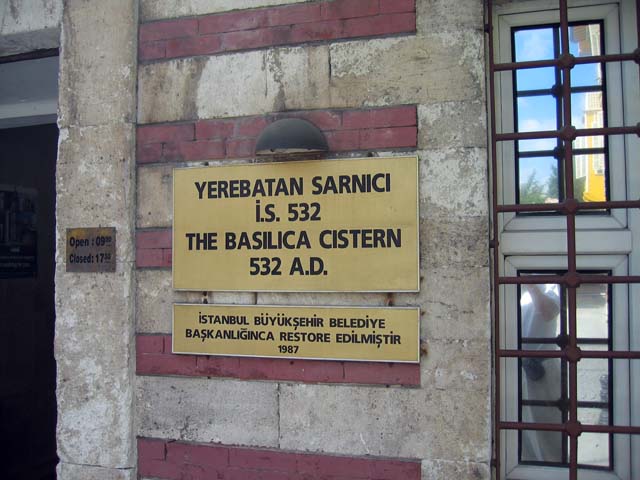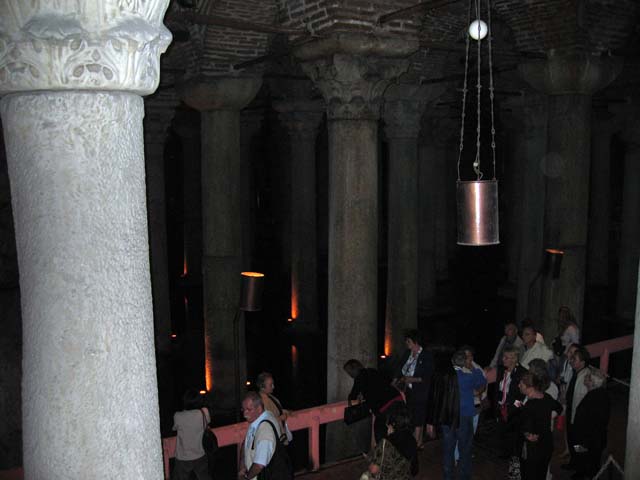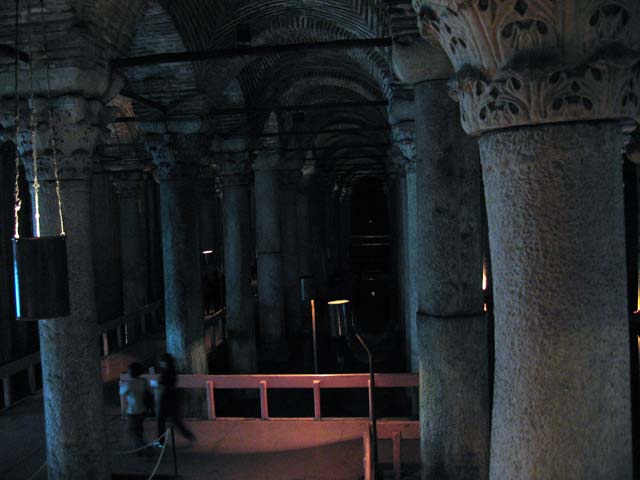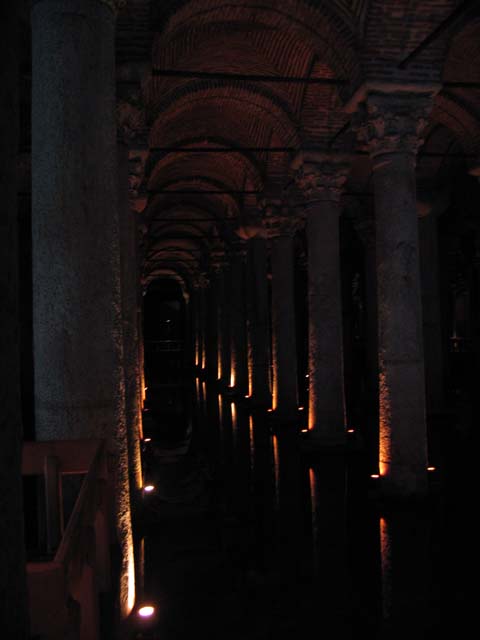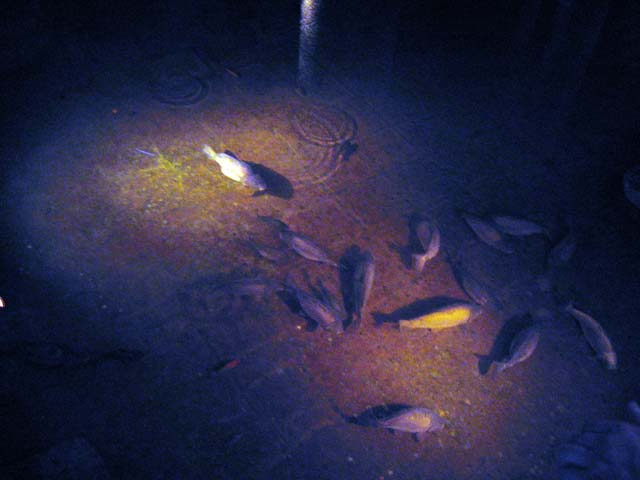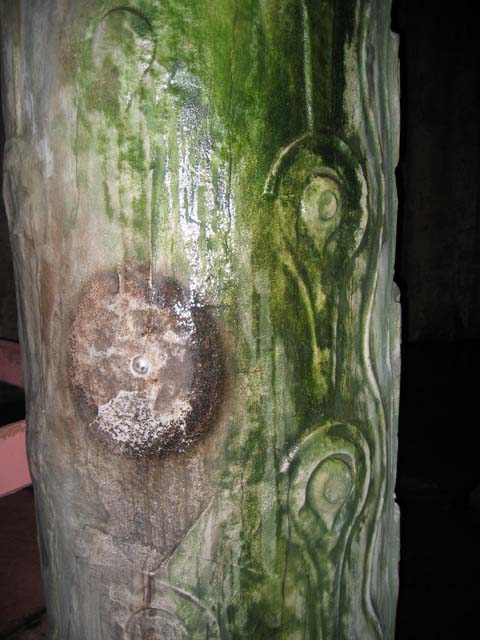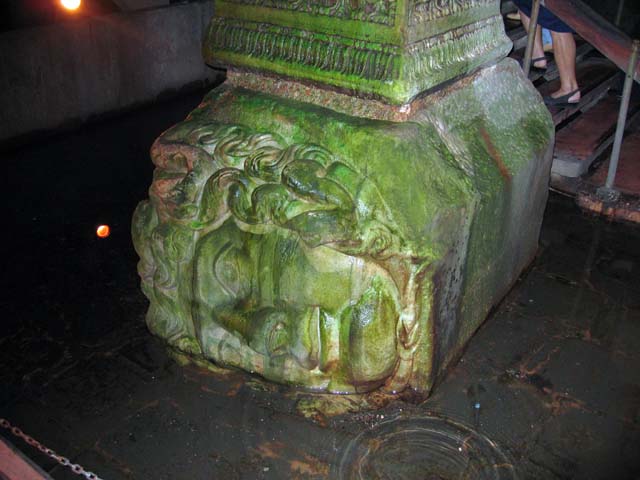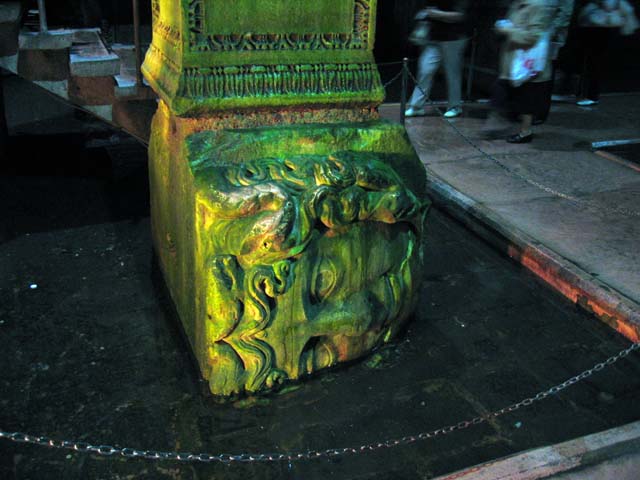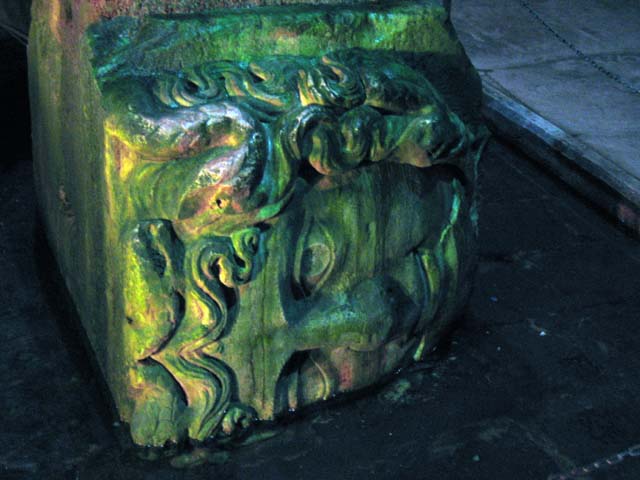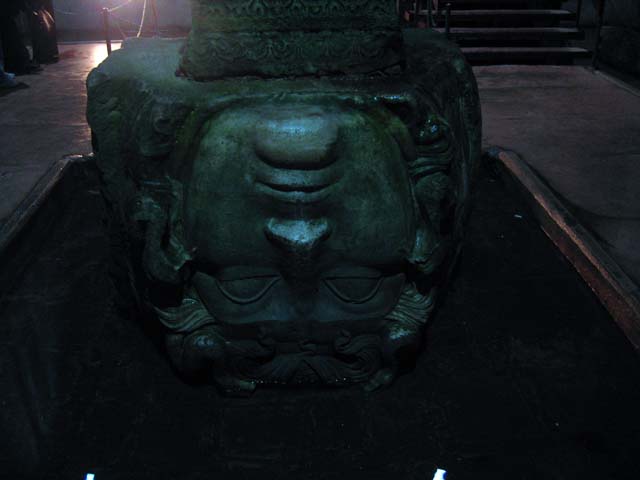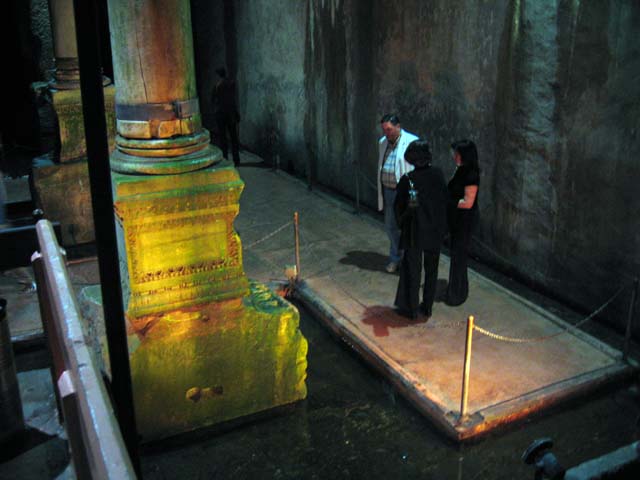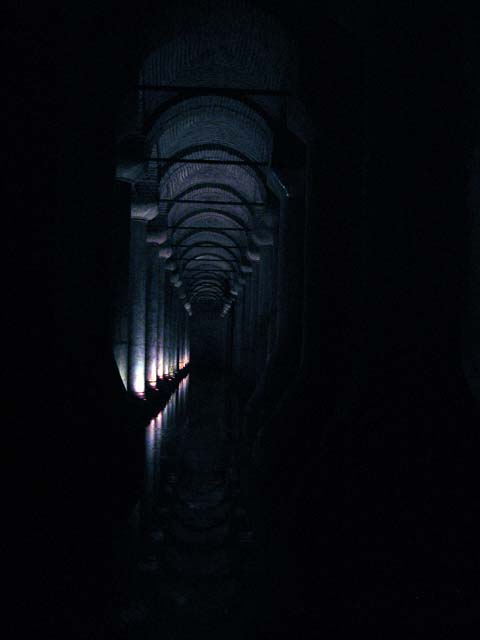|
I'd read about this place, but I wasn't really sure what it was. Very near the Hagia Sophia, I'd heard, there was a very plain little stone structure that led down to a fabulous Byzantine waterworks. And there it is, over there, on the other side of the street. Let's have a look.
This must be the place. I'm on my own right now. Everybody else is eating up the street, but I've looked forward to this for a long time, and I don't want to miss it.
Ooooh. Spooky down here. And dank and dark and drippy and old. Very old.
This vast underground water cistern, a beautiful piece of Byzantine engineering, is the most unusual tourist attraction in the city.
Although there may have been an earlier , smaller cistern here, this cavernous vbault was laid out under Justinian in 532 AD, mainly to satisfy the growing demands of the Great Palace on the other side of the Hippodrome.
For a century after the conquest, the Ottomans did not know of the cistern's existence.
It was rediscovered after people were found to be collecting water, and even fish, by lowering buckets through the holes in their basements.
Look sir! Fish!
The cistern is held up by 336 columns, each over 26 feet high.
Only about two thirds of the original structure is visible today, the rest having been bricked up in the 19th century.
In the far left-hand corner two columns rest on Medusa head bases.
These bases are evidence of plundering by the Byzantines from earlier monuments.
They are thought to mark a nymphaeum, a shrine to the water nymphs.
Hey, she's upside down!
Tourists ponder the Medusa mystery.
Visitors tread walkways to the mixed sounds of classical music and dripping water.
Spooky place. And well worth the visit.
|


